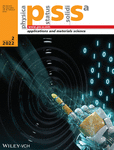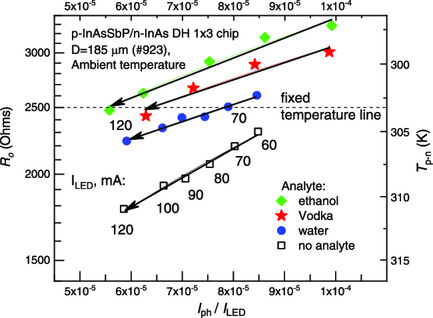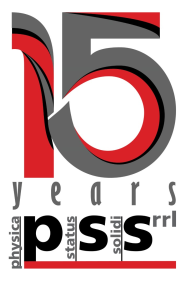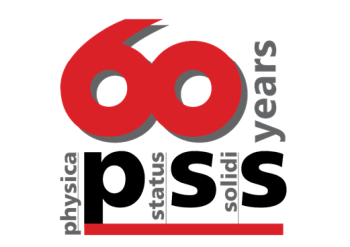Journal list menu
Export Citations
Download PDFs
Cover Picture
MemSor: Emergence of the In-Memory Sensing Technology for the Digital Transformation
- First Published: 30 January 2022

MemSor Devices
MemSor devices combine between the roles of traditional sensors and non-volatile memory devices, enabling the direct storage of an external stimulus intensity using a single device. MemSor devices are promising for applications requiring real-time analysis of sensors data, such as internet-of-things, augmented reality, robotics, among others. More information can be found in article number 2100528 by Nazek El-Atab.
Masthead
Perspectives
60 years of pss
MemSor: Emergence of the In-Memory Sensing Technology for the Digital Transformation
- First Published: 21 October 2021
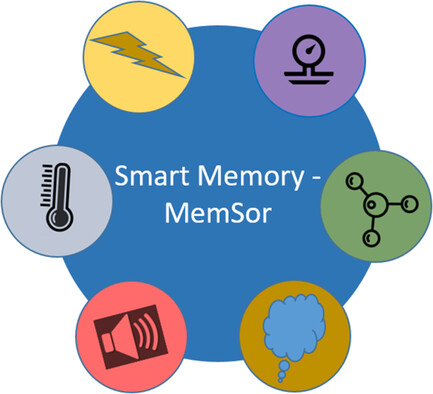
In this perspective, the emerging trend of smart memory devices is discussed, which can sense: MemSors. The demonstrated in-memory optical sensing devices are first briefly reviewed, and next, perspectives on the potential integration of other sensing capabilities are provided. Different scenarios for the implementation of the in-memory sensing technology in future energy-efficient and scaled down electronic systems are also discussed.
Reviews
60 years of pss
A Review of Platinum Diffusion in Silicon and Its Application for Lifetime Engineering in Power Devices
- First Published: 26 October 2021
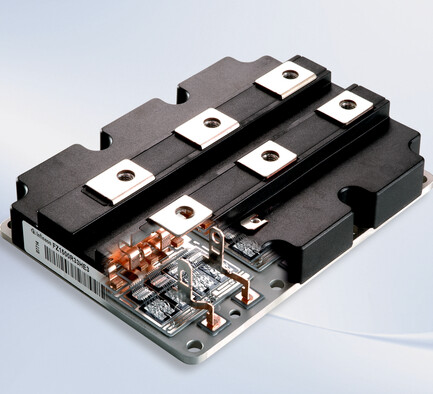
In silicon power semiconductors, platinum is used to improve the switching characteristics of the devices through lifetime adjustment of charge carriers. Platinum diffusion in silicon has been a research topic for many scientists over the past decades. Herein, the current knowledge on the topic of platinum diffusion in silicon is presented together with its utilization in silicon power devices.
Research Articles
Back-Contacted Carrier Injection for Scalable GaN Light Emitters
- First Published: 06 November 2021
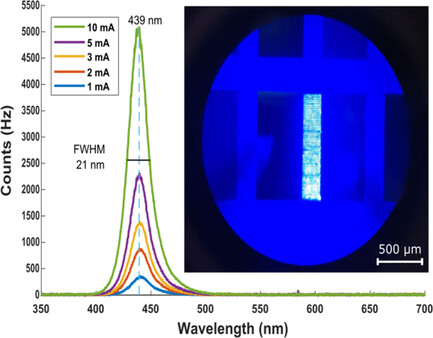
Back-contacted indium gallium nitride (InGaN) quantum well LEDs can enable extremely large light emitters based on diffusion driven charge transport. The sharp electroluminescence peak at 439 nm from the multi-quantum well (MQW) stack demonstrates this. The back-contacted structure combines the best parts of thin-film and flip-chip LEDs.
The Influence of Recessed Floating Metal Rings Structure on Electrical Properties of AlGaN/GaN Schottky Barrier Diodes
- First Published: 05 November 2021
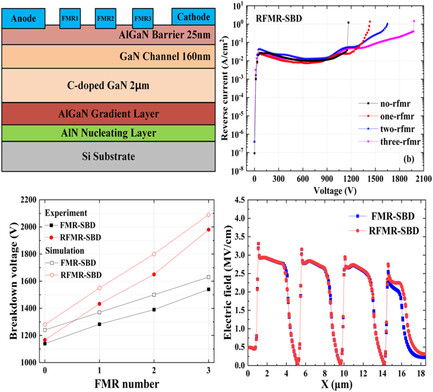
The breakdown voltage (V BR) of 1980V is obtained by fabricating the AlGaN/GaN Schottky barrier diodes (SBDs) with three recessed floating metal rings (RFMRs). Compared with the conventional-SBDs, recessed anode-SBDs and floating metal rings (FMR)-SBDs, the forward characteristics and reverse breakdown voltage are improved in RFMR-SBDs. The GaN SBDs with RFMRs showgreat improvement in V BR.
Effect of Heat Treatment on Wettability and Condensation Heat Transfer of Laser-Textured Stainless Steel Surfaces
- First Published: 03 November 2021
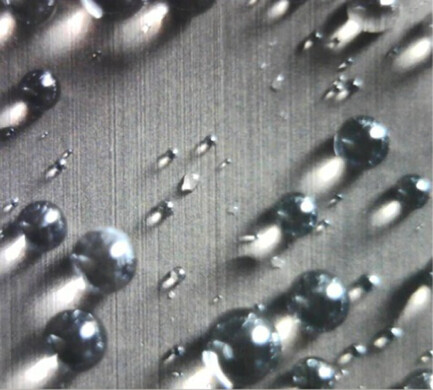
Laser texturing technology assisted by green post-treatment (heat treatment) is introduced for stainless steel surfaces herein. In particular, a stable periodic dual-scale micro-/nanostructure on SUS 304 stainless steel surface is obtained by nanosecond laser micro-/nanotexturing. The measured steam condensation heat transfer coefficient of the textured steel surface after heat treatment is about 1.83 times that of the original sample.
p-InAsSbP/n-InAs Double Heterostructure as an On-Chip Midinfrared Evanescent Wave Sensor of Liquids
- First Published: 05 November 2021
Effect of Defects on Strain Relaxation in InGaN/AlGaN Multiple-Quantum-Well Near-Ultraviolet Light-Emitting Diodes
- First Published: 05 November 2021
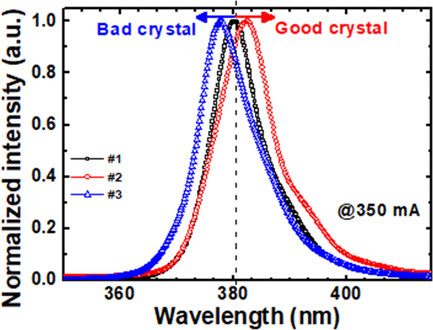
The effect of point defects on piezoelectric field is investigated by similar-structure near-ultraviolet light-emitting diodes. It is found that the piezoelectric field, the radiative recombination rate, and the redshift in peak wavelength increase with the samples’ crystal quality compared with the reference sample. These optoelectronic characterizations reveal that the samples’ strain relaxation is caused by defects.
Chiral Dependence of Vortex Domain Wall Structure in a Stepped Magnetic Nanowire
- First Published: 25 November 2021

Herein, vortex domain wall (VDW) with anticlockwise chirality (AVDW) and clockwise vortex domain wall (CVDW) with tail-to-tail magnetization configuration is studied using micromagnetic simulation. The VDW dynamics and the pinning potential are investigated in a new proposed device with a stepped area of length (l) and depth (d), as shown in the figure.
Optimized Selective-Area p-Type Diffusion for the Back-Illuminated Planar InGaAs/InP Avalanche Photodiodes by a Single Diffusion Process
- First Published: 10 November 2021
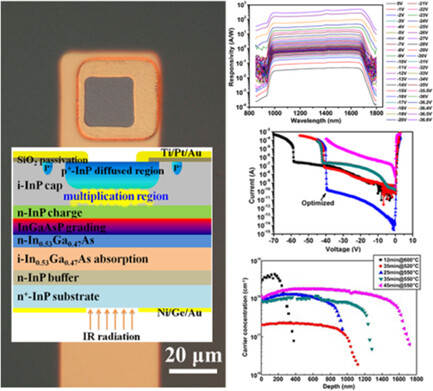
A process of single rapid thermal diffusion in N2 atmosphere with a Zn3P2/Zn/SiO2 multilayer structure for preparation of a planar back-illuminated In0.53Ga0.47As/InP avalanche photodiode (APD) is proposed. Through optimization, a low dark current, high responsivity, fast transient response, and high reliability infrared APD is obtained, which demonstrates a simple method for the development of high-performance planar In0.53Ga0.47As/InP APD focal plane arrays.
Effects of Ga on Mechanical Properties and Microstructure of Cu–Sn–Ti Filler
- First Published: 26 October 2021

To solve a series of problems of Cu–Sn–Ti fillers, Ga is added to the fillers to promote its mechanical properties and microstructure. Through the study of the reaction layer between diamond and fillers, it is found that Ga can increase the thickness of the interface reaction layer. The research results can promote the application of copper-based fillers in various industries.
Special Section: Advanced Dielectrics and Related Devices Guest-Edited by Mohamed Bouazaoui, Bruno Capoen, Hicham El Hamzaoui, Christophe Kinowski
Section Cover
Energy Transfer and Quenching in Sol–Gel-Derived Silica Glass Green Phosphors Doped with Tb3+ and Ce3+ Ions: Distinct Difference between P- and Al-Codoped Glasses
- First Published: 30 January 2022
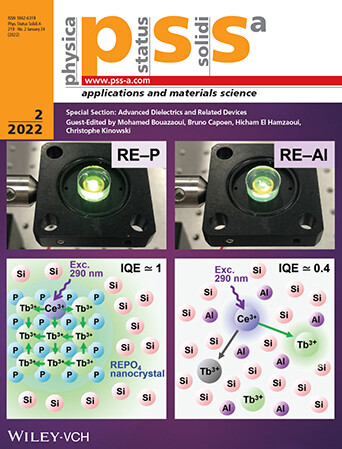
Sol–Gel-Derived Silica Glasses
Sol–gel-derived (Tb,Ce)–P- and (Tb,Ce)–Al-codoped silica glasses emit bright green photoluminescence from Tb3+ ions under the ultraviolet excitation of Ce3+ ions. The (Tb,Ce)–P-codoped glasses are glass-ceramics containing (Tb,Ce)PO4 nanocrystals, in which energy migration is unrestricted but concentration quenching is negligible. In the (Tb,Ce)–Al-codoped glasses, rare-earth ions are dispersed and energy transfer between them is slow. More information can be found in article number 2100494 by Koichi Kajihara and co-workers.
Research Articles
Energy Transfer and Quenching in Sol–Gel-Derived Silica Glass Green Phosphors Doped with Tb3+ and Ce3+ Ions: Distinct Difference between P- and Al-Codoped Glasses
- First Published: 12 October 2021
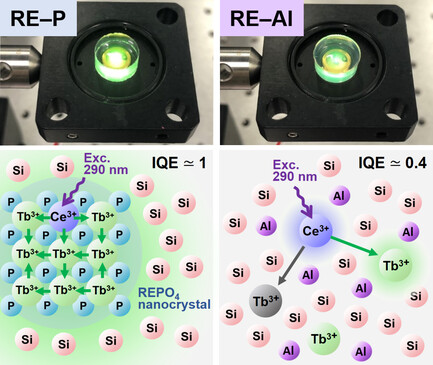
Sol–gel-derived (Tb,Ce)–P- and (Tb,Ce)–Al-codoped silica glasses emit bright green photoluminescence from Tb3+ ions under the UV excitation of Ce3+ ions. The (Tb,Ce)–P-codoped glasses are glass-ceramics containing (Tb,Ce)PO4 nanocrystals, in which energy migration is unrestricted but concentration quenching is negligible. In the (Tb,Ce)–Al-codoped glasses, rare-earth ions are dispersed and energy transfer between them is slow.
Photobleaching Effect on the Radiation-Induced Attenuation of an Ultralow Loss Optical Fiber at Telecommunication Wavelengths
- First Published: 21 October 2021
Pulsed X-Ray Radiation Response of Ultralow Loss Pure-Silica-Core Optical Fibers
- First Published: 11 November 2021
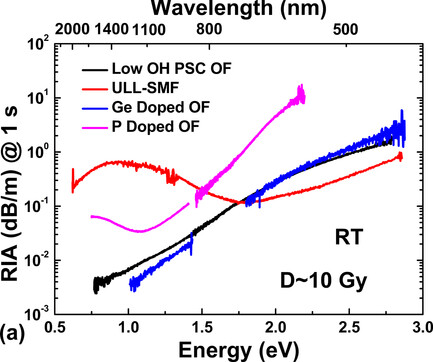
The transient radiation response under ≈1 MeV X-ray pulse of a new type ultralow loss pure-silica-core single-mode optical fiber, is studied for the first time. Online (hundredths millisecond of time resolution) radiation-induced attenuation spectra measurements are performed at room and liquid nitrogen temperatures. The goals are to characterize the metastable defects recovering after the shot, responsible of the fiber attenuation.




